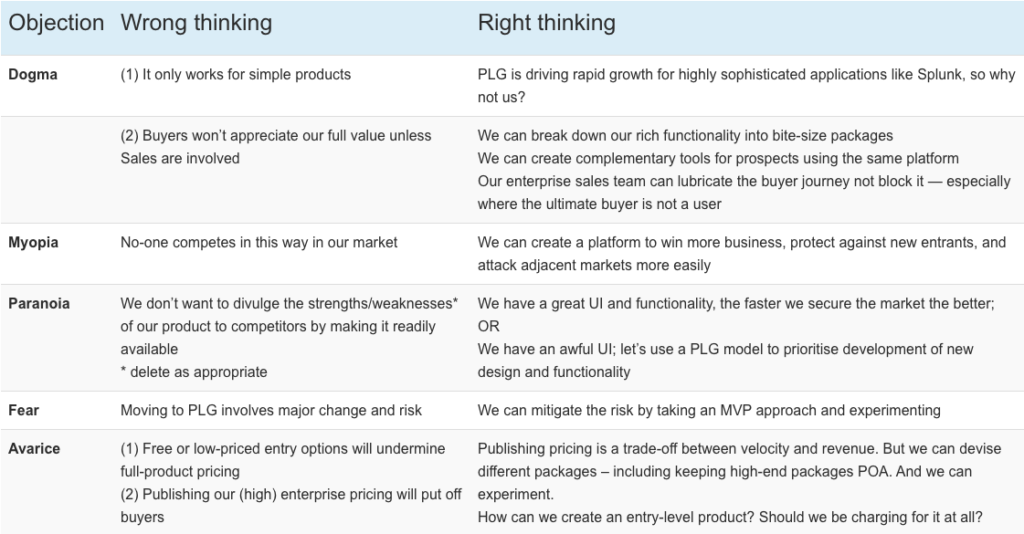Introduction from Mel Day, Marketing Moves CEO

I’m delighted to introduce a guest article from Ian Hook, a marketing expert whom I’ve known for a long time. As the title suggests, Ian’s article discusses how software markets at both start up and enterprise level are dominated by outdated sales engines – holding by hyperscale growth.
Overall from our perspective, we’re seeing the need for more and stronger product marketers and managers. Marketing Moves saw more demand for this job role before lockdown so hopefully this will come back. And we absolutely agree with Ian – product needs to be at heart of and ingrained with the sales process!
Outdated sales engines offer software start-ups a disruption opportunity in enterprise markets
In a fascinating interview on the Start-up Scaleup Game Plan podcast, Hussein Kanji, co-founder of London-based VC Hoxton Ventures, lamented the ability of European enterprise-software start-ups to achieve “hyperscale” growth —held back by poor “sales engines” when compared to their North American counterparts. Kanji, named by the UK’s Daily Telegraph as “Europe’s most influential technology investor”, is well placed to judge. He has peered under the hood of many firms on both sides of the Atlantic. This is not just a European start-up issue. Many enterprise software markets are dominated by incumbents running outdated, inefficient sales engines that put a drag on growth and expose them to attack by new entrants.
Time for change
There is a shift happening in how businesses, large and small, adopt and buy applications. Rooted in the consumerization of software, it is changing the way software firms go to market.
Called “product-led growth” (PLG) the approach takes a bottom-up, user-centric route to customer acquisition. In contrast to traditional top-down sales, PLG aims to put applications in the hands of users as early as possible and then draw them onto higher-value, higher-price packages.
While the principle is not new, its applicability to complex product and sales scenarios, is. Early proponents like Dropbox are now joined by Splunk (enterprise security-information and event management), Atlassian (software-development tools), and Slack (collaboration software), to name a few.
PLG offers start-ups the potential to disrupt markets where incumbents are hanging on to old-school sales engines — and deliver the hypergrowth VCs like Hoxton expect.
Misfiring sales engines
Revenue operations at most enterprise-software firms are still based on a model conceived twenty years ago when the advent of the internet moved power from seller to buyer.
In fact, many resemble a digital mutation of twentieth-century outbound selling: spray the internet and subscribers with tiredinformational content; generate “marketing-qualified leads” based on the first whiff of online engagement; send in sales to dial for victory.
Achieving results using the same formula is getting tougher. Harder to get heard above the cacophony of information everyone is pumping out, and harder to connect with decision-makers — ‘warm’ leads or not.
Part of the reason is what Andrew Chen called “the Law of Shitty Clickthroughs”: Over time, all marketing strategies result in reducing clickthrough rates.
But there is a more fundamental issue at play: buyers and users have become more ‘tech-savvy’ and self-reliant. From discovery to deployment, they increasingly expect a friction and hassle-free experience.
Selecting, installing and using new applications is a part of every-day life. Half of all knowledge workers have grown up in the digital world. They appreciate the power of technology to improve their working life. And they are more inclined to try solutions for themselves.
They are also less patient than ever. Disqualification looms large if you can’t speak to their needs in a few words and then demonstrate immediately how you address them.
Development innovations are accelerating the shift
Cloud computing may have started an application revolution, but innovations in UX technology and practices, and code-free application integration, are propelling it forward.
Improvements in UI design are making application navigation easier. Customer-journey mapping, and role and context-based UI rendering, is enabling application functionality to be aligned to user need and ability, at any given point in time. Plus, business configuration is more likely to be an incremental in-flight task rather than a pre-use big bang.
Application-usage analysis, powered by applications like Amplitude or Splunk, enables timely intervention of virtual or human helpers to ensure users get the most from their application, adopt more sophisticated use – and ultimately increase retention.
Sales 3.0
If you can build an application that is easy for users to adopt – ergonomically, technically and economically — you change the dynamic of the sale. You reduce friction, forge a stronger relationship earlier, open up the possibility of viral growth, and lower customer-acquisition costs (CAC).
Zoom zoom
Last year I observed at close quarters, an enterprise win for Zoom with one of the world’s largest banks. The circumstances surrounding the deal is revealing.
Some two years earlier, a competitor had been selected to be the bank’s collaboration tool of choice. It was a classic top-down sale that leveraged the vendor’s existing relationship built over many years, supplying a range of products.
Unfortunately, deployment across the firm’s sprawling organisation of over 200,000 employees in 50-plus countries, was a challenge. Not just technically, but in getting buy-in from its vast user base. For the bank’s implementation team as well as the vendor, the project was a change-management nightmare.
Then, seemingly out of nowhere, in swooped Zoom’s enterprise-sales team. Although the specifics of the deal were unclear; it is safe to assume that, by the time the Zoom account director met the Queen (or King) Bee in the C-suite, they already had thousands of their workers across the hive using and advocating Zoom.
The Zoom example demonstrates how PLG’s bottom-up sales approach not only complements top-down enterprise sales models, but also reduces risk, CAC and sales-cycle time. It also shows how PLG offers strategic advantage, enabling new entrants to outflank established players and move more easily between small, mid and large-enterprise sectors.
Putting product in your sales engine
“Product-led” can sound like an oxymoron to executives schooled in enterprise sales. But in a self-service world, it’s the product that does the selling, at least initially.
Complexity of the customer use case or product sophistication should rarely be a barrier to PLG. Most customer use cases can be broken down into discrete tasks against which accretive functionality can be applied.
But this can only be done if you have an effective software and product platform on which to build.
Putting social-network provider on path to hypergrowth
When a software firm providing private social networks for brands and influencers, wanted to put their foot on the gas, they discovered a problem.
Having proven the concept and secured pilot customers, it became clear that their first-generation platform could not deliver their vision — a self-service model for individuals and organisations to set up and manage their own monetizable social network.
Technology-transformation consultants, Soimplement, were called in to put the business back on track. Within a range of actions undertaken to upgrade product and engineering operations, the following were particularly pertinent to enabling the company’s product-led growth:
Consolidating discrete products into a single, multi-tenant platform on which new features could be rapidly developed and rendered in different service permutations
Introducing customer-behaviour analytics to optimise the end-user experience, and provide feedback for feature development and packaging
Creating cross-functional ‘growth teams’, comprising marketing, product and engineering disciplines, tasked specifically to optimise customer journeys
With platform reliability and performance stabilised, the infrastructure properly autoscaling, security-hardened and costing 75% less to run — and a clear line of sight into user behaviour — the company was primed and ready to fly.
Why are firms slow to make the change?
PLG is not suitable for every software application. If you’re selling pure back-office ‘plumbing’ as opposed to applications with end users, it may not be applicable. But often the biggest hurdle is mindset.
Here are some common objections and misconceptions:

The long view
Many enterprise software firms still operate a go-to-market model that was conceived decades ago, for an era where the inexperience of buyers and immaturity of applications required sales intervention.
As a result, product markets world-wide are ripe for disruption by new entrants or incumbents that take a product-led growth strategy, which recognises the pivotal role product design can play in enabling early, easy product adoption.
In 1955 the acclaimed industrial designer, Henry Dreyfuss, wrote in his book “Designing for people”:
“When the point of contact between the product and the people becomes a point of friction, then the [designer] has failed”
The same thing could be said of sales processes.




